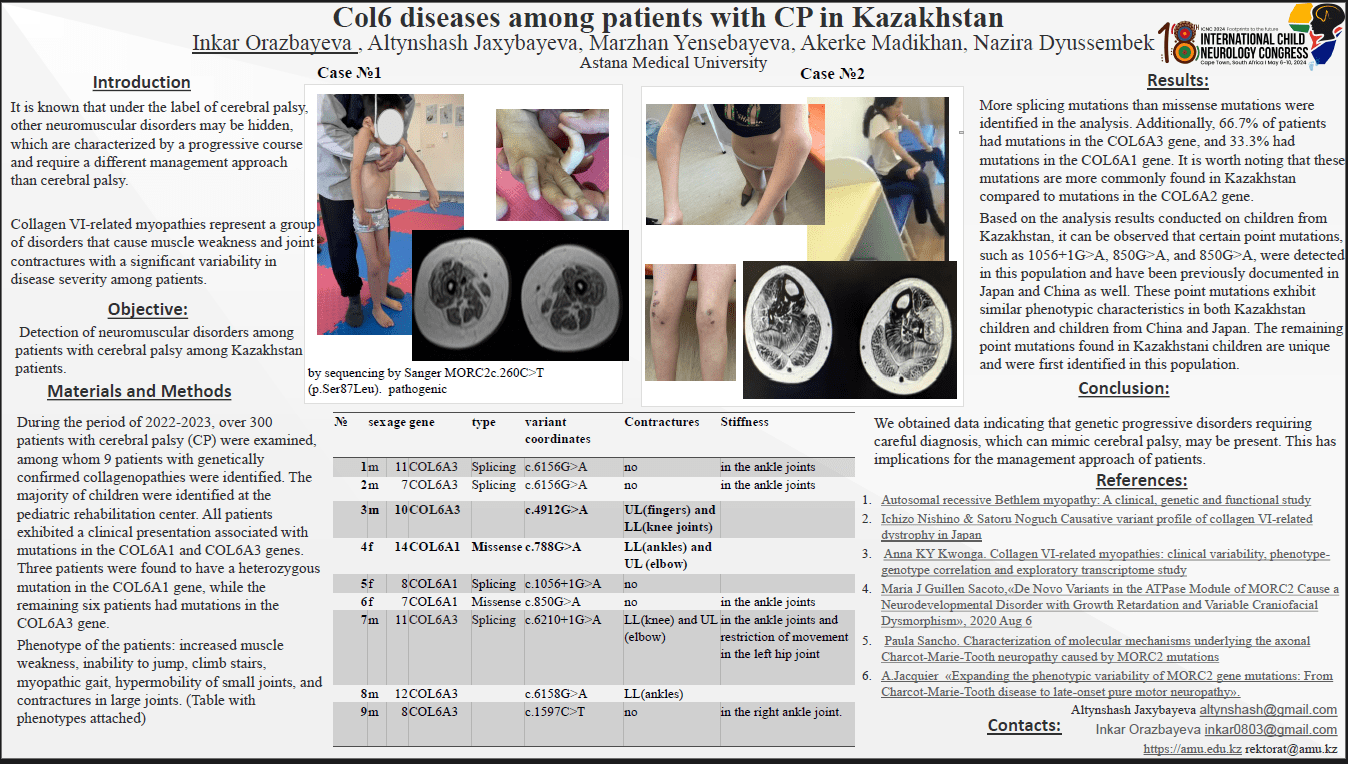Mimics Diseases Among Patients With CP In Kazakhstan
It is known that under the label of cerebral palsy, other neuromuscular disorders may be hidden, which are characterized by a progressive course and require a different management approach than cerebral palsy.
Objective: Detection of neuromuscular disorders among patients with cerebral palsy among Kazakhstan patients.
During the period of 2022-2023, over 300 patients with cerebral palsy (CP) were examined, among whom 9 patients with genetically confirmed collagenopathies were identified. The majority of children were identified at the pediatric rehabilitation center. All patients exhibited a clinical presentation associated with mutations in the COL6A1 and COL6A3 genes. Three patients were found to have a heterozygous mutation in the COL6A1 gene, while the remaining six patients had mutations in the COL6A3 gene.
Discussion: Based on the analysis results conducted on children from Kazakhstan, it can be observed that certain point mutations, such as 1056+1G>A, 850G>A, and 850G>A, were detected in this population and have been previously documented in Japan and China as well. These point mutations exhibit similar phenotypic characteristics in both Kazakhstan children and children from China and Japan. The remaining point mutations found in Kazakhstani children are unique and were first identified in this population.
Conclusion: We obtained data indicating that genetic progressive disorders requiring careful diagnosis, which can mimic cerebral palsy, may be present. This has implications for the management approach of patients.
Inkar Orazbayeva
Astana Medical University
Kazakhstan
Marzhan Yensebayeva
Astana Medical University
Kazakhstan
Altynshash Jaxybayeva
Astana Medical University
Kazakhstan
Akerke Madikhan
Astana Medical University
Kazakhstan
Nazira Dussembek
Astana Medical University
Kazakhstan
